Every weekend, hordes of people make their way up from Taipei and farther parts of the country to take in the wonders of Yehliu (野柳) and Fulong Beach (福隆海灘). The northern coast’s dramatic scenery, which features beaches, bizarre rock formations and latticed rocky platforms that stretch out to sea, is nothing short of spectacular. About midway between the two destinations on Provincial Highway No. 2 lies one of the nicest yet often overlooked places in the region: Bitou Cape (鼻頭角).
Bitou Cape is an immensely varied strip of land that edges out into the sea at Taiwan’s northeastern corner. There are extraordinary coastal views, a rich diversity of plants and animals, rock formations that would make a geologist go weak at the knees, and a pleasant, well-maintained hiking path from which to take it all in.
The Bitou Cape Trail (鼻頭角步道) begins just a few minutes’ walk south of the sleepy fishing town of Bitou; English and Chinese signs along the roadside point the way to the trailhead. The path skirts Bitou Elementary School (鼻頭國小) before winding its way through a dense mangrove forest. The area is crawling with wildlife, and you should easily spot several species of brightly colored butterflies, dragonflies and lizards. If you’re quiet and fortunate enough, you might also glimpse a squirrel or two scampering through the undergrowth.
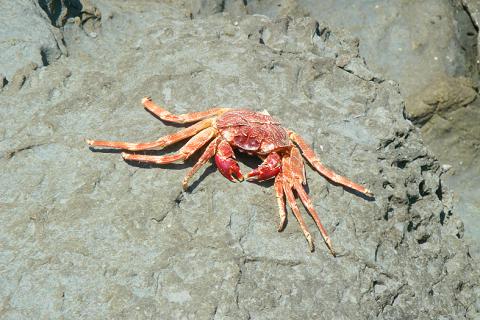
Photo: Andrew Crosthwaite
When you emerge into the open, you’re met with an invigorating blast of cool, salty sea air. And then there is the view. The cliffs at Bitou have borne the full brunt of the Pacific Ocean’s winds and waves, and are suitably rugged as a result. The hiking trail, which winds its way along the length of the cape, affords incredible views of steep rock faces that stand like sentinels against the mighty power of the sea. Toward the end of the trail, the path separates, and the lower route leads to Bitou’s picturesque lighthouse. The other path takes you to the end of the trail, where the land falls away in front and on either side of you. With 270 degrees of glorious sea to look at, you might have a difficult time turning around to head back down the path.
Another of Bitou’s features is the wide, wave-cut platform that lies at the base of the cliffs. The scoured and grooved surface of this massive, rocky terrace bears witness to the centuries of erosion that created it. There are many different minerals and types of rock in the area, and since some of them are much weaker than others, the weathering process has left its mark in a series of seemingly preternatural formations. Two of the most common are honeycomb rocks, with their many dimples and holes, and mushroom rocks, which have tops much larger than their bases.
Some people who visit Bitou prefer not to veer too far from the main hiking trail, but you should take the time to head down to the platform. The flights of stairs that take you there are not very long, and while it might not be safe to stand by the water’s edge, there’s no need to walk out that far. Even if you stay away from the sea end of the platform, it’s a great place to view marine life. The endless rock pools give shelter to a number of crab, shrimp and fish.
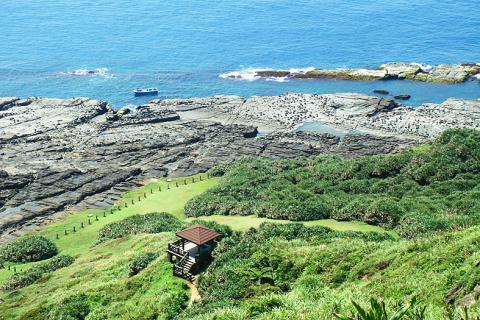
Photo: Andrew Crosthwaite
The Bitou Cape hiking trail isn’t especially long — just a few kilometers — and it’s well equipped with toilet blocks and rest stops, but it is still very exposed. If you come, especially if you’re with children, make sure you carry sunscreen, hats and plenty of water.
If you’re in need of cooling down after you’ve finished your hike, try the Bitou and Longdong Bay Geology Park (鼻頭龍洞地質公園). It’s about 500m south of the trailhead and has a marine swimming pool that is open to the sea except for a few large rocky outcrops jutting out of the water. There are lifeguards on duty, a smaller children’s play pool and plenty of space to lie back and soak up the sun. If you feel hungry, try the cafe in the park or head back to Bitou for some freshly caught seafood at one of the inexpensive restaurants next to the sea. The town’s harbor is always pretty, but if you happen to see it filled with blue and white fishing vessels, you should count yourself lucky because this is when it’s at its most charming.
Bitou proves the old saying that good things come in small packages. I can’t think of many better places to spend a day by the sea.
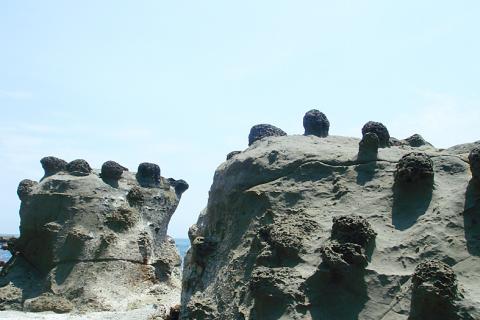
Photo: Andrew Crosthwaite
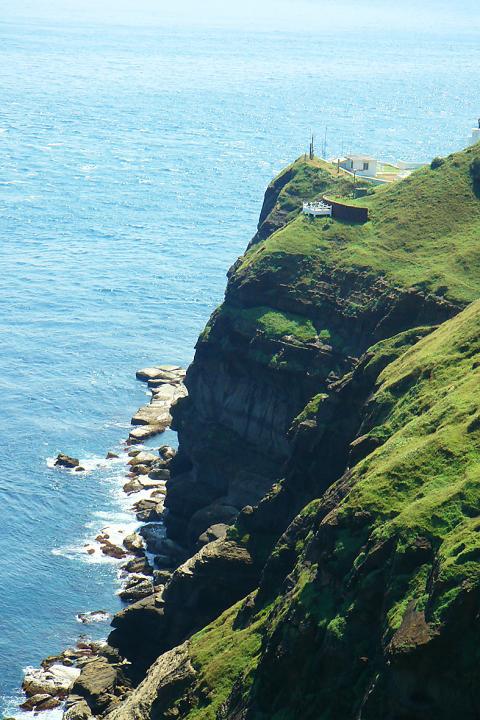
Photo: Andrew Crosthwaite

Photo: Andrew Crosthwaite

Photo: Andrew Crosthwaite
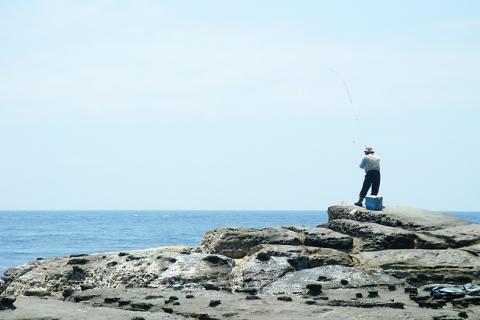
Photo: Andrew Crosthwaite
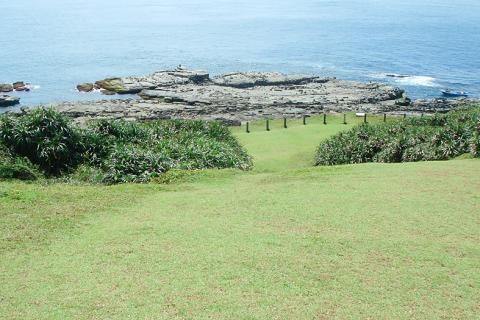
Photo: Andrew Crosthwaite

Photo: Andrew Crosthwaite

Many people noticed the flood of pro-China propaganda across a number of venues in recent weeks that looks like a coordinated assault on US Taiwan policy. It does look like an effort intended to influence the US before the meeting between US President Donald Trump and Chinese dictator Xi Jinping (習近平) over the weekend. Jennifer Kavanagh’s piece in the New York Times in September appears to be the opening strike of the current campaign. She followed up last week in the Lowy Interpreter, blaming the US for causing the PRC to escalate in the Philippines and Taiwan, saying that as

US President Donald Trump may have hoped for an impromptu talk with his old friend Kim Jong-un during a recent trip to Asia, but analysts say the increasingly emboldened North Korean despot had few good reasons to join the photo-op. Trump sent repeated overtures to Kim during his barnstorming tour of Asia, saying he was “100 percent” open to a meeting and even bucking decades of US policy by conceding that North Korea was “sort of a nuclear power.” But Pyongyang kept mum on the invitation, instead firing off missiles and sending its foreign minister to Russia and Belarus, with whom it

The Chinese Communist Party (CCP) has a dystopian, radical and dangerous conception of itself. Few are aware of this very fundamental difference between how they view power and how the rest of the world does. Even those of us who have lived in China sometimes fall back into the trap of viewing it through the lens of the power relationships common throughout the rest of the world, instead of understanding the CCP as it conceives of itself. Broadly speaking, the concepts of the people, race, culture, civilization, nation, government and religion are separate, though often overlapping and intertwined. A government

Nov. 3 to Nov. 9 In 1925, 18-year-old Huang Chin-chuan (黃金川) penned the following words: “When will the day of women’s equal rights arrive, so that my talents won’t drift away in the eastern stream?” These were the closing lines to her poem “Female Student” (女學生), which expressed her unwillingness to be confined to traditional female roles and her desire to study and explore the world. Born to a wealthy family on Nov. 5, 1907, Huang was able to study in Japan — a rare privilege for women in her time — and even made a name for herself in the